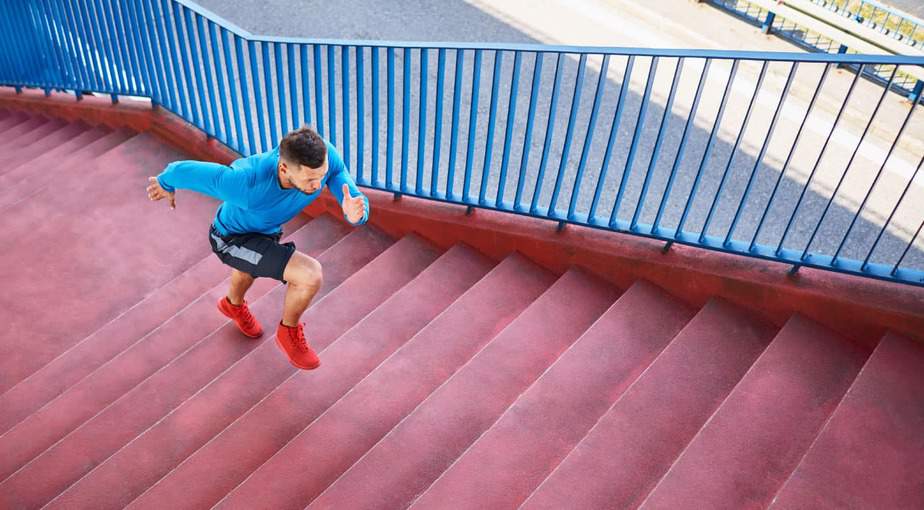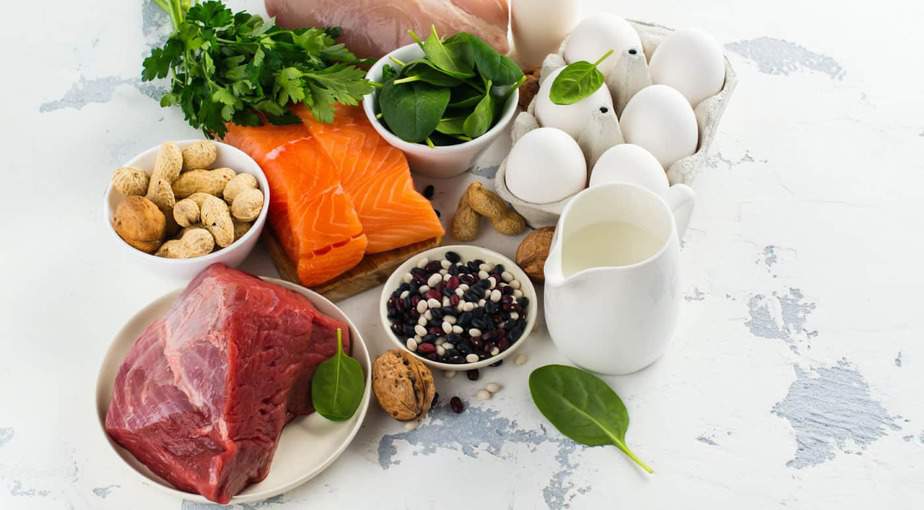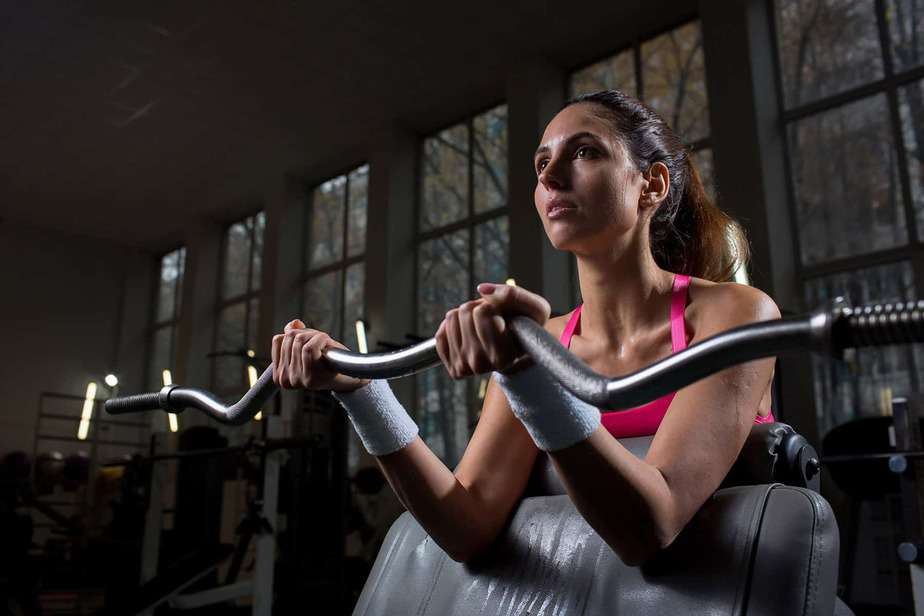A fit physique means getting stronger and leaner—which means building muscle density if not mass.
Many fitness enthusiasts miss the distinction between weight and mass, because ‘getting fit’ is often associated with building muscle mass by bulking up, instead of improving muscle density with lean fibrous muscle. The result is often an increased body weight as you bulk up.
Because of this, losing weight and building muscle are mistakenly placed at odds with each other.
Key Point: By prioritizing the quality of muscle tissue you build–that’s dense and fibrous–you can simultaneously lose weight while building muscle.
Losing Weight, Losing Mass, and Losing Fat

People talk a lot about losing weight. But what does that actually mean?
Losing weight literally means decreasing the pull of gravity against your body. Losing mass, on the other hand, is what happens when you drop dress sizes or pants sizes (e.g., you actually lose physical matter and become lighter).
Hence, you can have the same mass but weigh more on Earth than you do on the moon.
Scientifically, when you lose mass, you decrease the amount of matter your body contains. But when you lose weight, you’re decreasing the effect of your mass against the force of gravity.
This may seem like a distinction without a difference, but it can change how you plan for your fitness goals.
The Interplay between Weight and Mass
Losing mass may mean you lose weight, but you can also lose mass and get healthier even if your weight stays the same, or increases due to gaining muscle mass. Remember, muscle is much denser than fat, so a person who is 200 pounds of solid muscle will look smaller than another 200-pound person who has more fat and less muscle.
It’s also possible to lose weight and mass, but end up weaker and less fit than when you started because you lost muscle, not fat.
Calorie Deficits and Burning Fat instead of Muscle
The only way to lose weight is to take in fewer calories than you burn.
A calorie deficit signals to your body that food is not plentiful. In response, your body treats building muscle as a lower priority. This could equate to losing muscle, especially if you skimp on your protein consumption to cut calories.
You need protein to maintain the muscles you already have. If you don’t eat enough of it, your muscles—rather than fat—will waste away.
An article from Harvard Health Publishing explains that losing muscle mass makes you weaker, lowers your mobility, and raises your risk of injuries. The healthiest weight loss involves losing fat, not muscle.
When you finally manage to melt off the pounds, where do they go?
According to Live Science, fat leaves the body primarily in the form of carbon dioxide and water that is exhaled through the lungs as part of a biochemical process called fatty acid oxidation.
Building Muscle

Building muscle requires a surplus of calories. A calorie surplus equips your body with the energy needed to construct new muscle tissue.
According to researchers at the University of New Mexico, muscles grow through a complex cellular process. Working out damages the fibers of your muscles, which your body works to repair through a process called protein synthesis. For your body to build muscle, protein synthesis must occur to a greater extent than muscle breakdown caused by damage.
In addition to the number of calories you consume as you try to build muscle, where those calories come from also matters. Not everything you eat is pure muscle-building fuel.
If you aren’t careful, it’s easy to unintentionally put on a little (or a lot of) extra body fat while you work toward increasing muscle mass.
Scientists have learned that exercise doesn’t aid in weight loss as much as many people think.
If you want to build lean muscle without gaining fat, you should consume the protein needed for building muscles while being mindful not to go overboard with junk food and overall calorie intake.
Can You Lose Weight and Build Muscle at the Same Time?

Building muscle and losing weight is a balancing act—much like a seesaw. You need to have a relatively high protein intake while watching your overall caloric consumption.
If you cut your calories too drastically, you won’t have enough energy to build muscles. Eating too much with the intent to bulk up, however, can lead to excess fat gain.
The ideal answer to the question of how to lose weight and build muscle is culking: “clean bulking” or “cutting and bulking.” Consider culking like riding a seesaw, were you prioritize a calorie surplus for a time, and then prioritize a calorie deficit for a time.
One method of culking is by strategically alternating between protein-rich calorie surpluses and calorie deficits (hence, the seesaw analogy).
You can use various programs promoted by fitness trainers to accomplish this feat, though none are set in stone or backed by science. Alternatively, you can simply follow these three basic tenets of clean bulking:
- Eat more protein: Experts recommend eating between 0.8 grams and slightly over 1 gram of protein per pound of body weight if you want to gain muscle. (Want to know more? We take an in-depth look in our article, “How Much Protein Do I Need?”)
- Lift weights: Include strength training, or weight training, in your workouts. Resistance training is particularly important for the production of anabolic hormones, which not only increase muscle growth but also improve fat metabolism.
- Stick to HIIT cardio: A special type of cardio exercise called high-intensity interval training (HIIT) can help you maintain your lean muscle mass while you burn fat, according to many human studies. Pre-workout supplements can give you the energy needed to push through tough HIIT workouts.
Losing Weight and Building Muscle as a Woman

For women, most of whom naturally have less testosterone than men, building muscle while losing weight can be particularly challenging.
Testosterone aids in muscle protein synthesis and tissue growth. Women’s bodies have more of a tendency to hang onto fat and more difficulty building muscle than men’s bodies typically do.
Women may be tempted to focus on weight loss at the expense of strength, but this is a big mistake. While losing muscle mass may result in a smaller body size, it leaves you with a weaker frame and none of the health benefits of adding muscle.
To answer the question of how to lose weight and build muscle at the same time, women should embrace strength training.
According to Boston University, women benefit just as much from weightlifting as men do, even though they may take longer to see the results of building muscle mass.
How to Increase Muscle Density without Increasing Muscle Mass or Weight
Yes, you can increase your muscle density without gaining muscle mass or overall weight using the following strategies.
Keep in mind that these strategies should be considered in a holistic manner, meaning each strategy works best when combined with the others.
Get Into Aerobic Exercises
The best aerobic exercises for increased muscle density are those that work muscle groups not targeted during weight training. Running, swimming and yoga not only boost cardiovascular endurance but also work the entire body, burn more fat, and contribute to better muscle definition.
- Do aerobic exercises for 75-150 minutes per week but ensure that every session lasts for 10 minutes to gain maximum benefit. As previously mentioned, high-intensity aerobic exercises are the best for increased muscle density.
- Add low-intensity aerobic exercises when you’re experiencing post-workout muscle soreness after resistance training. Your muscles will enjoy more resting time and, thus, recover better from the stresses placed on them.
Change Your Resistance Training Routine
Resistance training, or weight training, not only burns body fat resulting in more muscle definition but it’s also effective in increasing muscle density.
- Train using free weights, such as barbells, dumbbells and kettlebells, since your muscles work together more efficiently in stabilizing your body when lifting. This results in more muscular involvement and, thus, in increased muscle density.
- Use heavy weights but limit your lifts to 3-6 repetitions and allow three minutes between reps. High-rep weight training puts more strain on your muscles resulting in increased density.
- Limit lifting to 10 sets only and stop when you feel yourself being near the point of exhaustion.
Always perform pre-workout and post-workout exercises, usually between five and 15 minutes.
Drink Plenty of Water
Hydration is crucial in muscle density because of its role in muscle recovery and regeneration. Even minor dehydration can cause proteins, the body’s building blocks for muscle, to degrade resulting in decreased muscle density.
Eat Healthy Protein
Clean protein is the best source for essential amino acids, although you may also want to consider protein supplements if you’re on a muscle density path. The best sources for clean protein include wild-caught salmon, pastured eggs, free-range chicken, and grass-fed beef.
Be sure to adopt meal timing, deal with stress, and get sufficient hours of sleep every night, too, since these are essential for overall health.
Conclusion: By better understanding the relationship between muscle mass and muscle density, you can better target your ideal body weight while strengthening your body and staying lean.
Related Articles
- Best Pre Workouts
- Best Protein Powders
- Best Post Workouts
- Best Pre Workouts for Women
- Best Paleo Friendly Protein Powders
- Best Organic Pre Workouts
